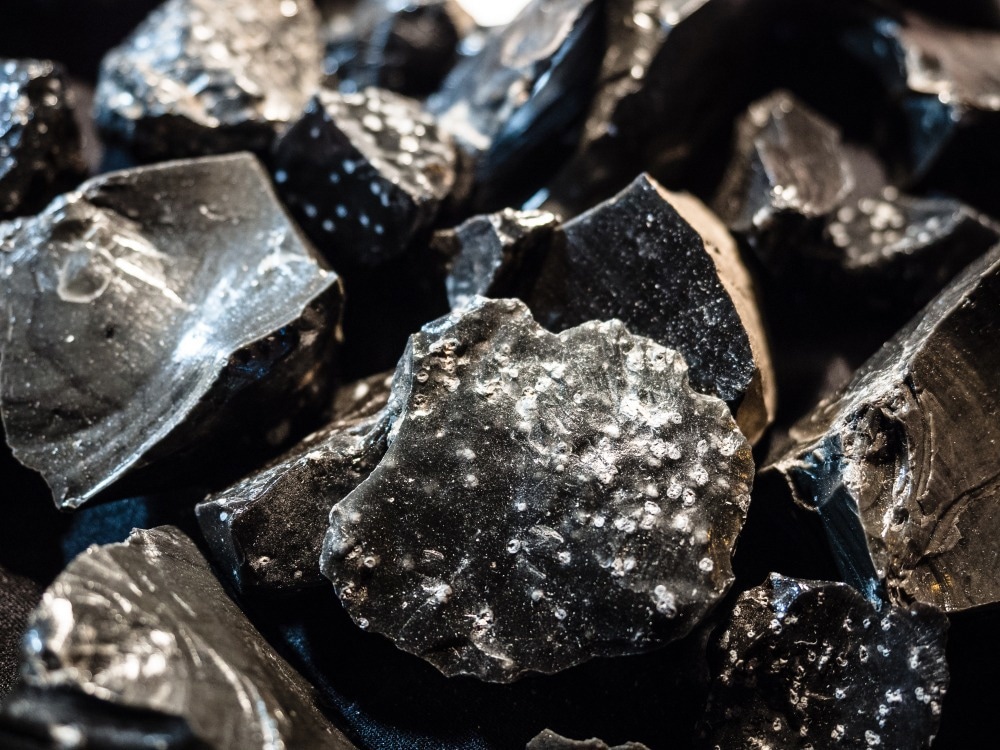Graphene is a multifunctional carbon nanomaterial widely synthesized for its applications in composites, energy storage, and sensors.

Study: Graphene/Graphene Derivatives from Coal, Biomass, and Wastes: Synthesis, Energy Applications, and Perspectives. Image Credit: pointbreak/Shutterstock.com
Although previous reviews mentioned that achieving an increased yield compromises graphene quality, limiting its commercialization, recent research on graphene highlighted the use of naturally abundant carbonaceous sources for the cost-effective production of graphene derivatives.
An article published in the journal Energy and Fuels discussed the recent advances in high-quality graphene synthesis from various naturally available carbonaceous materials with a glimpse of their potential scalability for commercialization. Moreover, previously reported synthetic strategies were explored to determine the most suitable technique to obtain high-quality graphene derivatives with good yield.
The application of graphene derivatives in the energy sector was also discussed, highlighting their importance for energy storage. The present review summarized the current scenario in graphene production and provided an insight into their cost-efficient production with high purity.
Graphene and Graphite
Among various carbon materials, graphene stands as an advanced carbonaceous material. Moreover, its high functionality is due to its distinct two-dimensional (2D) polymeric structure consisting of covalently bonded carbon atoms with sp2 hybridization, organized in a hexagonal lattice structure.
Moreover, the delocalized π-electrons present in the aromatic ring of graphene contribute to the improved thermal and electrical conductivity, tensile strength, high stiffness, high specific surface area, impermeability, and higher optical transparency, making graphene an important and cost-effective carbonaceous material for industrial applications.
Graphite is one of the reliable raw materials for graphene synthesis and has close structural similarity with it.
The “graphene structural unit” in graphite’s stacked structure makes it a suitable precursor for graphene synthesis. Liquid-phase exfoliation (LPE), like micromechanical exfoliation, supercritical fluid, mechanical cleavage, and electrochemical exfoliation, are a few of the established synthetic methods.
Coal for Graphene Derivatives
Coal is formed due to the natural coalification process and is popularly used to produce electrical energy. The three-dimensional framework of coal is composed of various inorganic and organic materials forming a complex heterogeneous mixture. Coal’s organic domains constitute aromatic/hydroaromatic and aliphatic carbon ring structures interconnected via aliphatic/ether linkages. On the other hand, the inorganic counterparts contain the constituents of sulfates, clays, silicates, carbonates, pyrites, and free minerals.
The aromatic/hydroaromatic/heterocyclic polycondensed carbon rings in coal, connected via the ether, methylene, and aromatic carbon-carbon linkages, form a fascinating organic framework within its structural matrix.
Anthracite coal has a high degree of coalification with several sp2 hybridized carbon microcrocrystals. The previously reported taixi anthracite was prepared from coal, wherein the raw coal was initially converted into graphite-like carbon material via graphitization at 2400 degrees Celsius for two hours and in the presence of iron (III) sulfate (Fe2(SO4)3) as a catalyst. Later the graphite-like carbon material was oxidized into graphite-like carbon oxides via the Hummers’ method.
On the other hand, bituminous coal, synthesized as raw material for coal-derived graphene films, involved initial electrolysis followed by a chemical vapor deposition (CVD) process. During the electrolysis, a coal electrolytic cell was used with a 4-molar concentration of sulfuric acid as an electrolyte.
40 millimolar iron (II) sulfate heptahydrate and 40 millimolar Fe2(SO4)3 were used as a source for iron ions alongside the addition of coal to the anodic solution. Later, the obtained coal char was treated with electrolysis treated with the CVD system.
Low-Cost Carbonaceous Precursor (LCP) and Biomass for Graphene Derivatives
Biomass-based materials are widely used as graphene precursors due to their structural and chemical favorability, facile operation, and low cost. A previous report mentioned peanut shells as agricultural waste biomass to synthesize few-layered graphene via probe sonication. Other biosources like grass and cockroach legs were also reported as precursors to obtaining monolayered graphene derivatives of high quality.
The LCP-based material serves as raw material for the high-scale production of low-cost graphene with optimal quality. The advantages of high yield and scalability of the LCP-based graphene derivatives enable their applicability in sensors, energy storage, water treatment, and catalysis. Since graphene is widely used in energy storage devices as electrode material, LCP-based graphene derivatives can meet the need for high-quality, low-cost graphene required for fabricating energy storage devices.
Conclusion
To summarize, naturally abundant, low-cost carbonaceous material was found to be an affordable and suitable source to produce commercial graphene. Graphene derivatives based on LCP showed excellent electrochemical properties for their energy storage applications. Despite the importance of graphite as a commercialized graphene precursor, low-cost carbon materials like coal fulfill the need for a cost-effective high-quality graphene derivative obtained commercially.
Additionally, the raw material and the synthetic methodology used in graphene synthesis highly impact the graphene characteristics. The LCP feedstock can serve as an efficient alternate precursor to coal for largescale commercialization of graphene derivatives economically.
Reference
Tamuly, J ., Bhattacharjya, D., Saikia, BK. (2022). Graphene/Graphene Derivatives from Coal, Biomass, and Wastes: Synthesis, Energy Applications, and Perspectives. Energy and Fuels. https://pubs.acs.org/doi/10.1021/acs.energyfuels.2c00976
Disclaimer: The views expressed here are those of the author expressed in their private capacity and do not necessarily represent the views of AZoM.com Limited T/A AZoNetwork the owner and operator of this website. This disclaimer forms part of the Terms and conditions of use of this website.